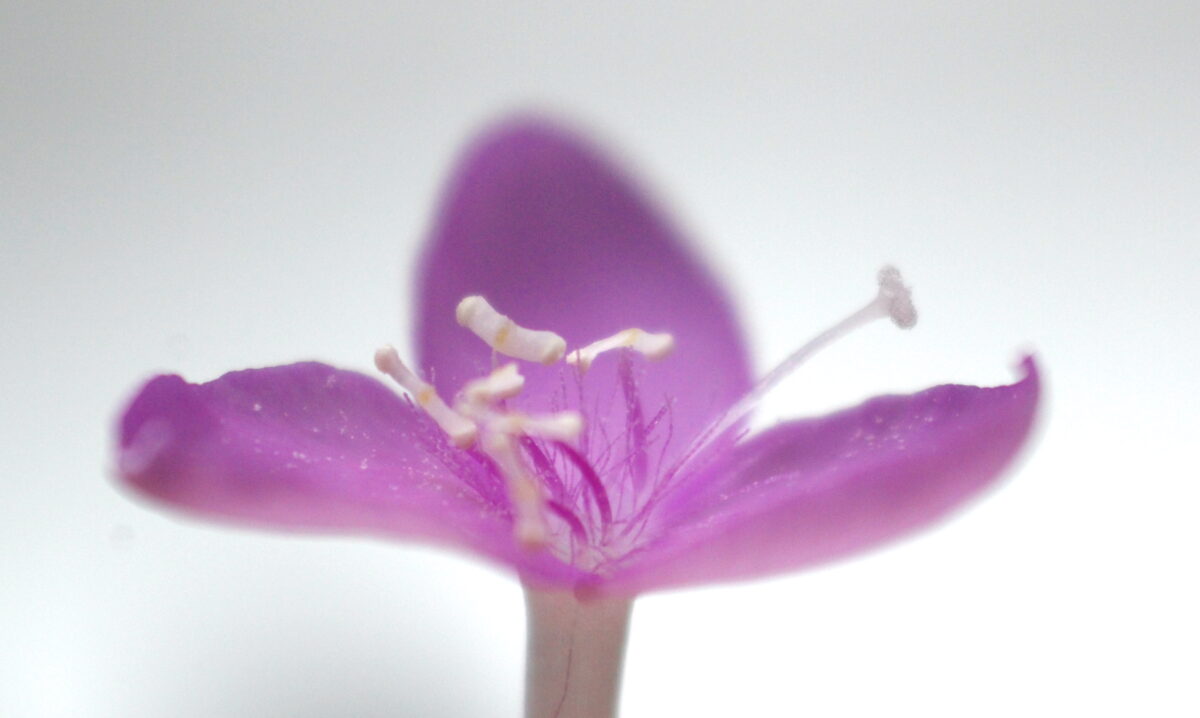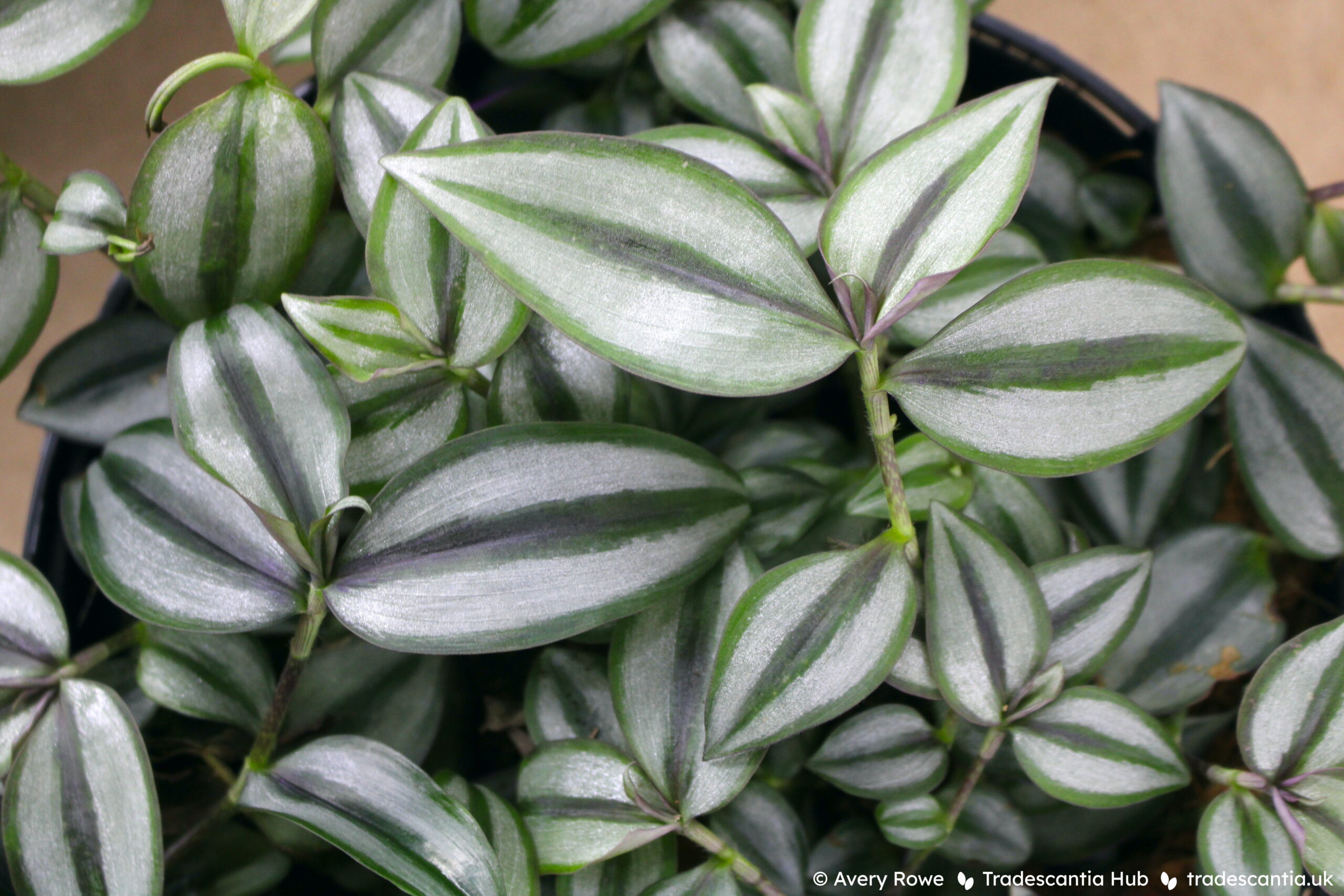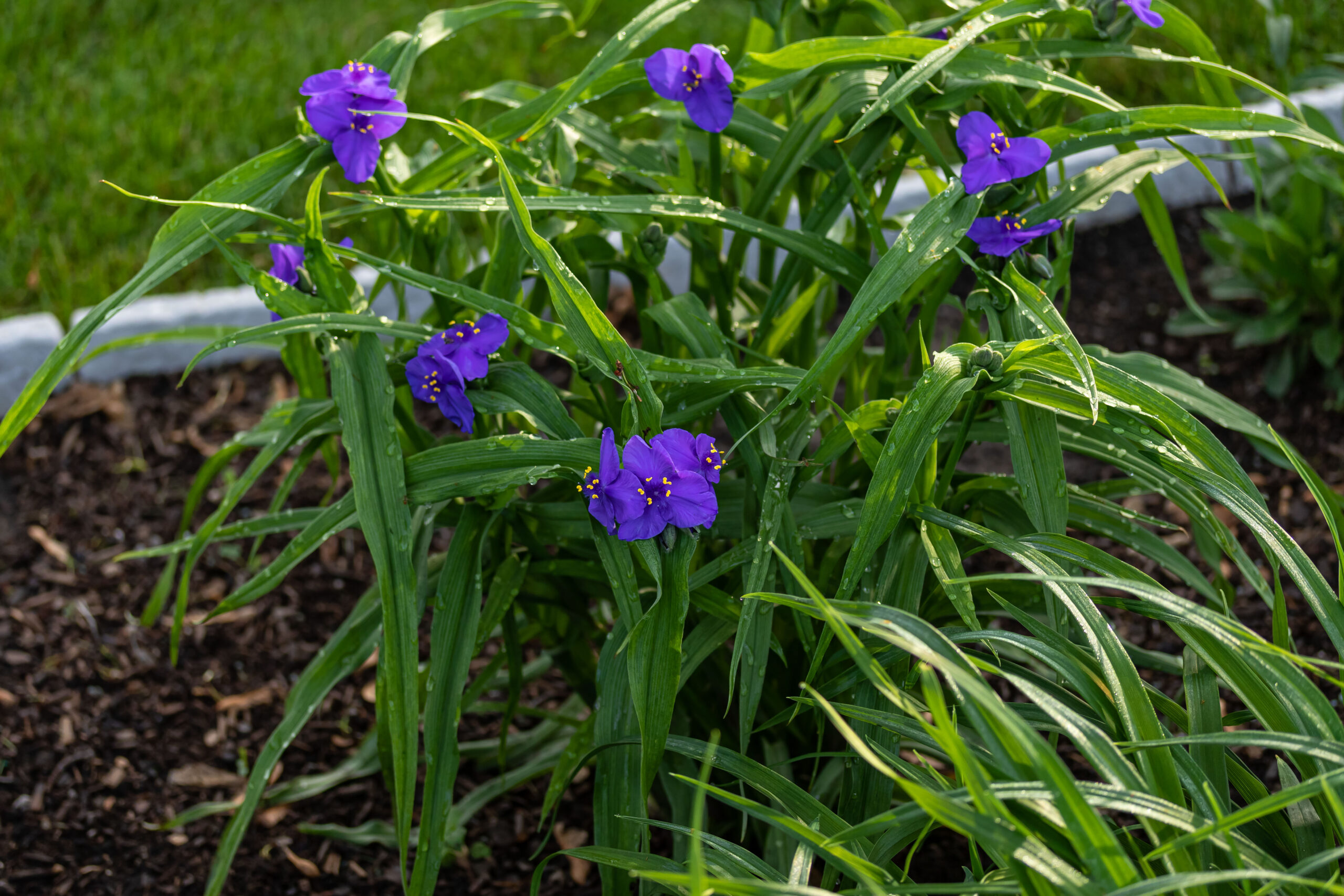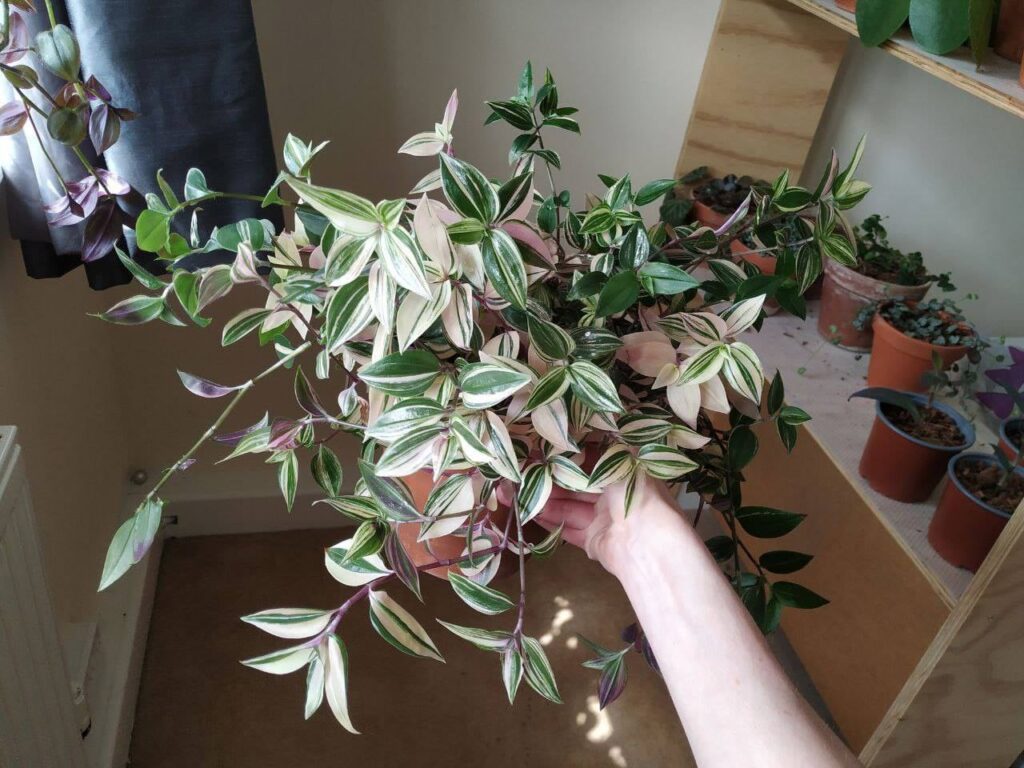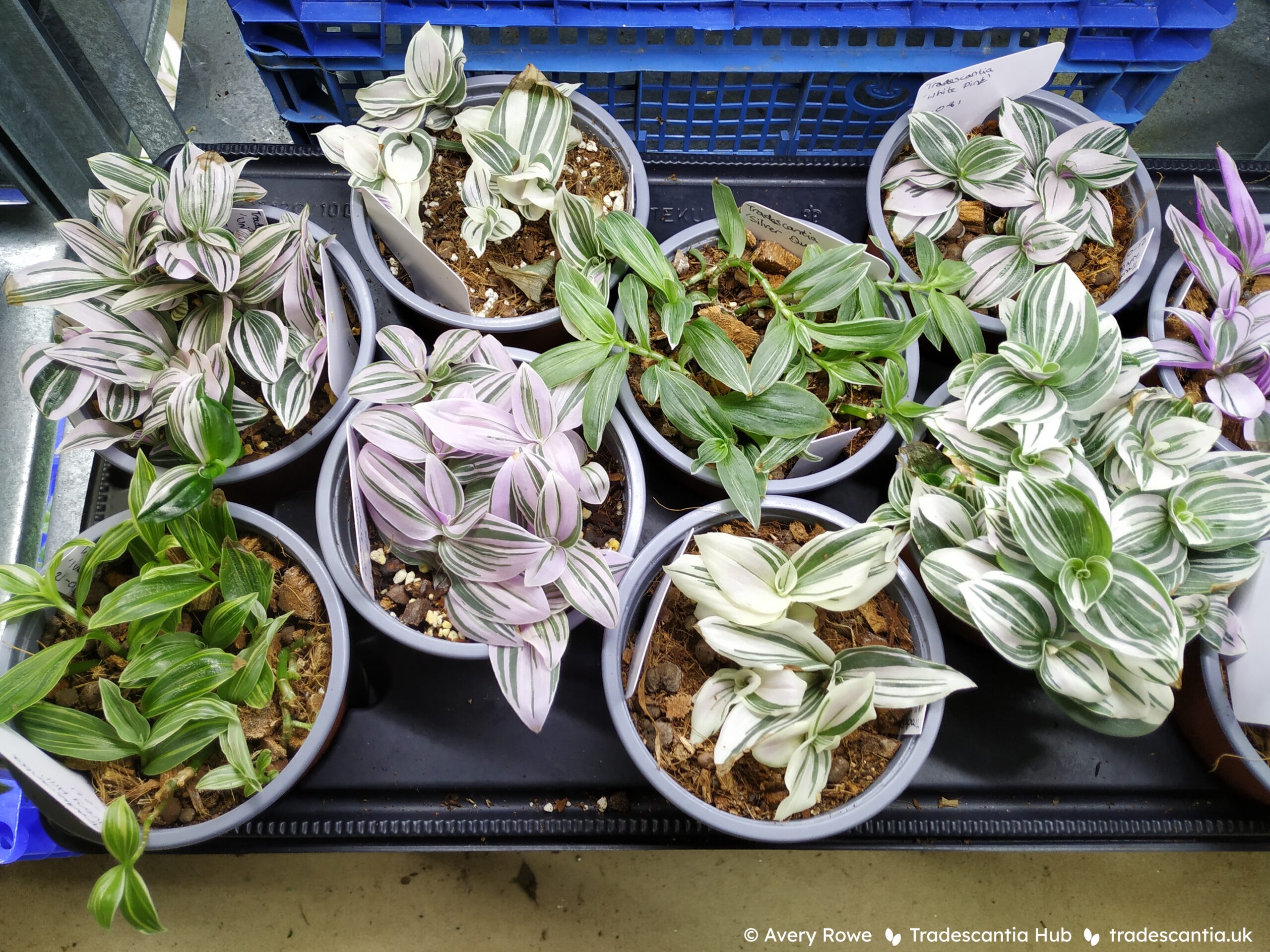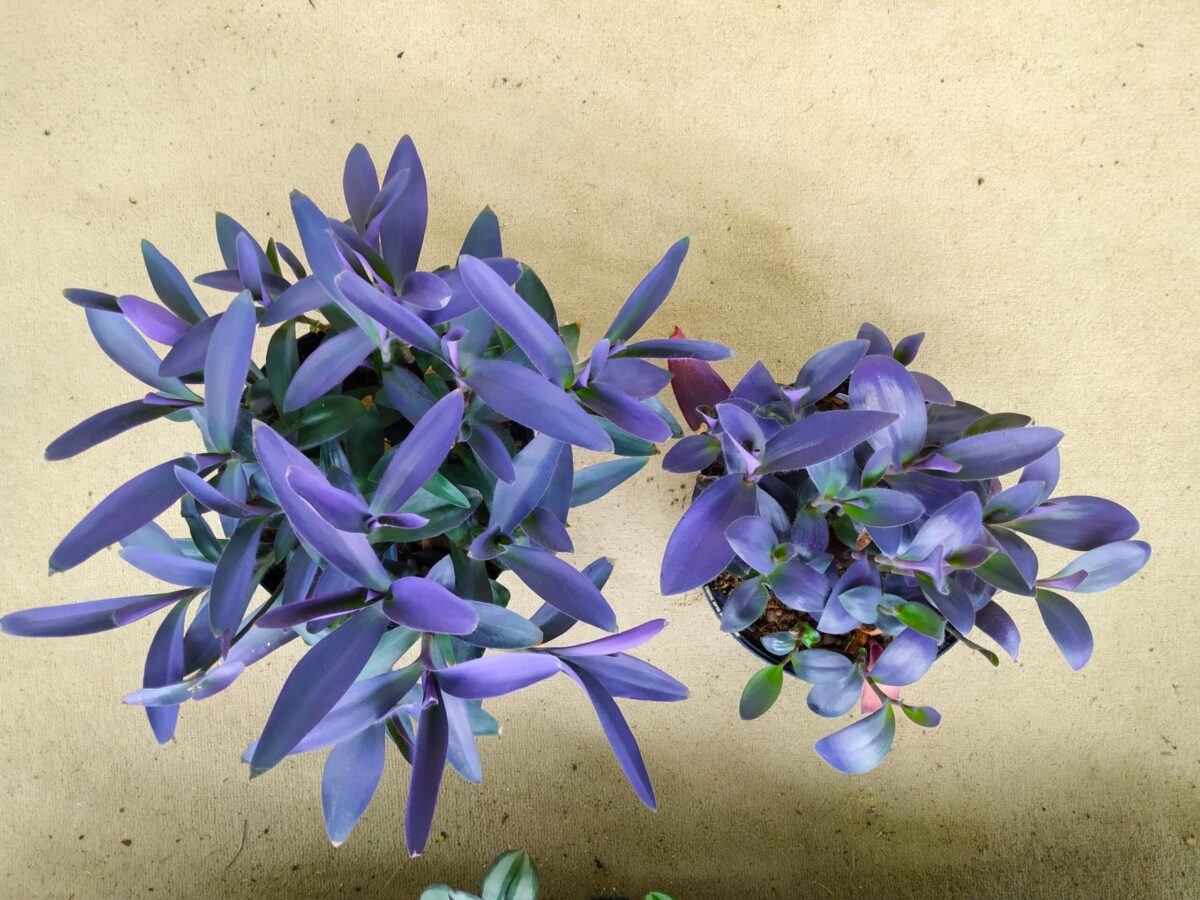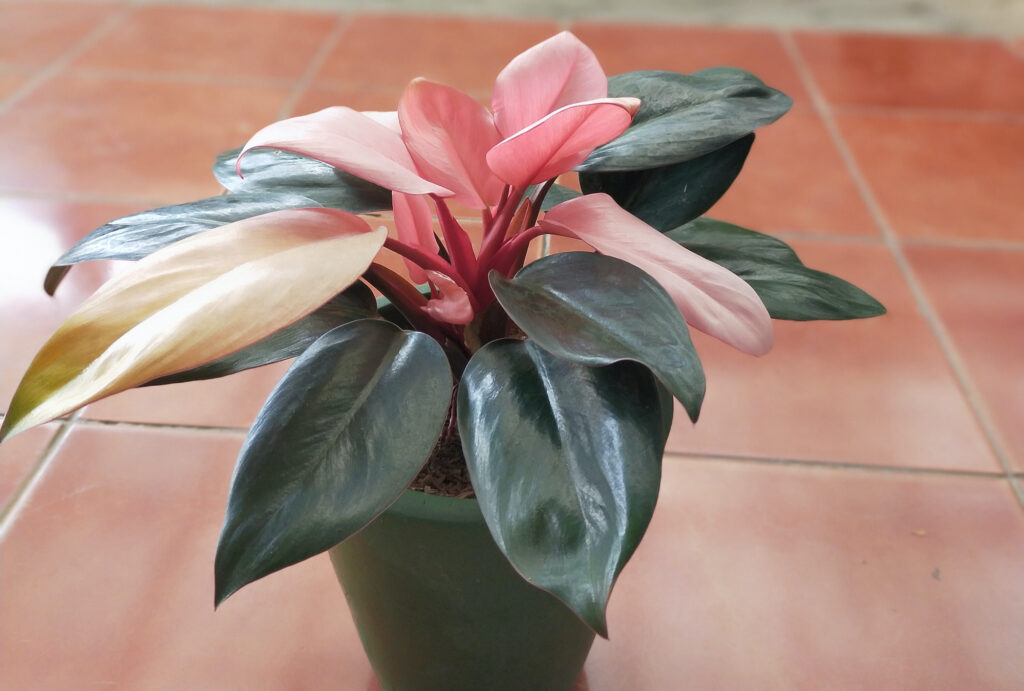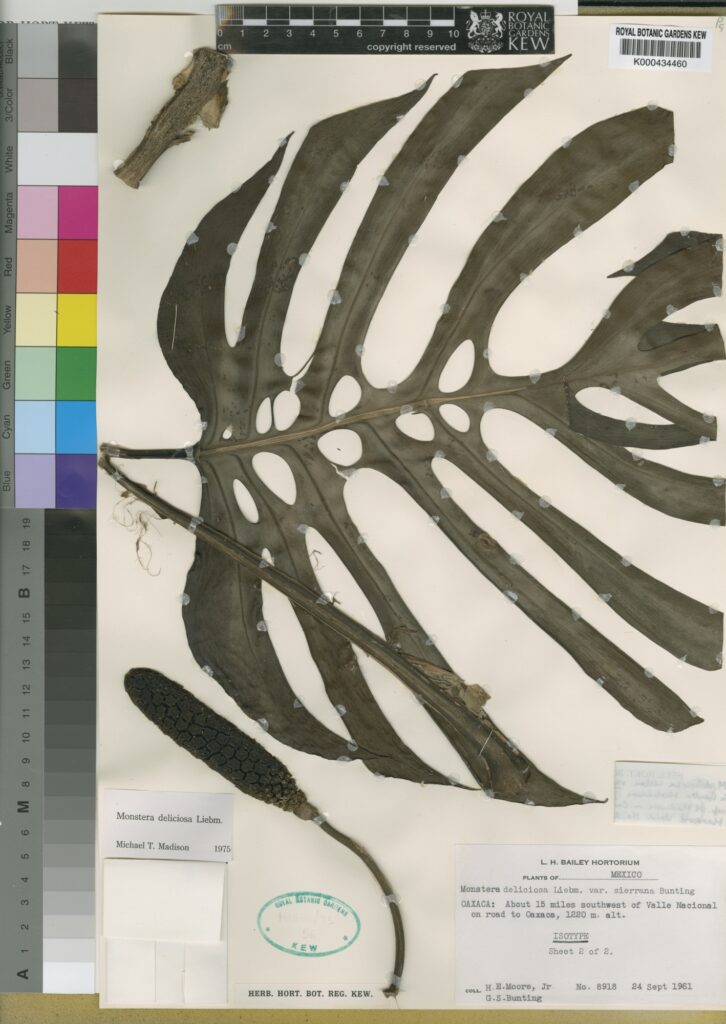Two Tradescantia zebrina naming mysteries, solved with one neat reclassification.
Articles
There are a a lot of Tradescantia cultivars which circulate with no valid name. A handful of those actually did have valid names once, and those names have been discarded over the years.
The hardy Tradescantia hybrids are popular garden plants, but they have a history of confused identity. Where did it all go wrong?
This plant has had a LOT of names. And it turns out not one of them is correct. Find out why all those names are wrong, and which is right!
It turns out the mysterious “grey” cultivar of T. pallida that appeared in the last few years, has actually existed since 2003, and its name is ‘Shadow Hill’!
Throughout history this name has been used in many different ways. There’s a lot of confusion and uncertainty over what plants it really refers to, or whether it should be used at all. This article will explain some of the history, the ways it’s currently used, and what’s scientifically accepted today.
You might have noticed some ‘Purple Heart’ plants look different to others. That’s because there are actually two different types!
Sometimes this plant is labelled as Tradescantia × andersoniana ‘Blushing Bride’, and sometimes it’s labelled as Tradescantia fluminensis ‘Maiden’s Blush’. But these names actually refer to two completely different cultivars!
If you’ve been interested in houseplants for more than a year or two, you probably already know the original “Pink Congo” story. A few years ago, a new plant called Philodendron “Pink Congo” came onto the scene. Its lower leaves are dark green, but the new leaves at the top are bright pink. It quickly became a wild hit among tropical plant enthusiasts and prices skyrocketed.
Like any popular conversation topic in the age of the internet, Monstera deliciosa has attracted its share of controversy and misinformation. In this article I’ll address one particular discussion that pops up regularly: the identity of Monstera borsigiana.

